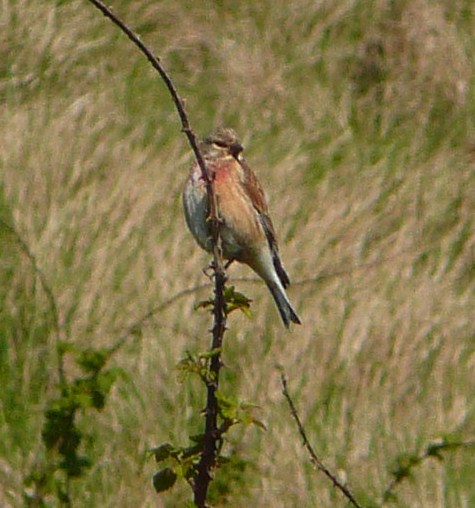 Linnet Linnet |
A varied selection of birds can be seen in and around the village, from heathland types, waterfowl, garden visitors and seabirds. We currently have records of over 80 different species and although some might be only singletons it does show the variety of bird life. With a wide range of habitats in the area, over a period of an hour or so you can typically see 20 or more species at most times of the year.
Birds are in general easy to spot and many people find their antics endearing, perhaps spending a little more time than they can afford watching them. From casually watching birds to counting them regularly is but a short step and doing so over a long period can be very revealing. Birds are dependent on their habitat for food, nesting sites, cover etc and a change in the numbers counted, up or down, not only tells us how well a particular species is doing, but also the underlying health of everything else it depends on.
The group has been counting birds in and around the village for well over 10 years, which is long enough to detect some changes. The data has been collected by means of two surveys, each carried out once a month.
One survey is a “spot” count around the Spring Basin and West Hill. The observer stands at each spot and records all the birds they can detect. If you would like to participate in this contact Dave Emery. The skill level required is quite high as you need to be able to recognise birds by sight and sound.
The other survey is our monthly garden bird watch. The level of expertise needed is lower and easily learned. There’s help on hand to get you started should you need it. This survey is proving to be very popular, and not only by those who can't get out much or don't fancy scrambling around the hill side, We now have around 20 households regularly taking part and as a reward each month a report drops into their email box showing what’s been spotted across the village plus a personal copy of John Newbould’s monthly newsletter. Contact John for more details
We have written a number of reports of surveys we have done and sent to Dorset Wildlife Trust, Natural England, RSPB, Dorset Environmental Record Centre and Wessex Water. The reports contain maps of where birds have been seen.
